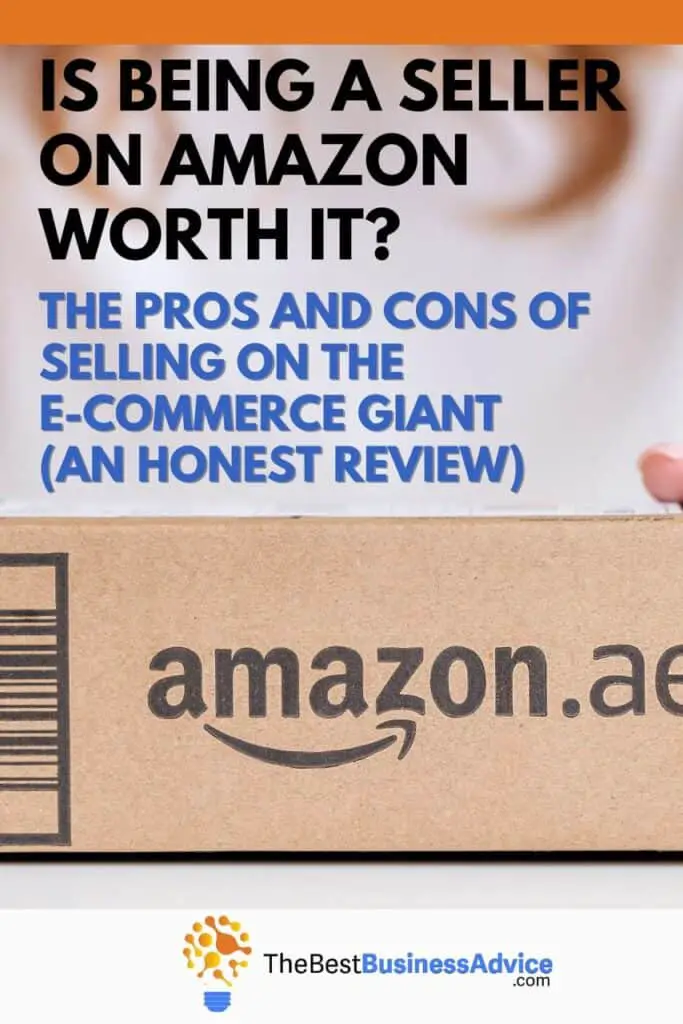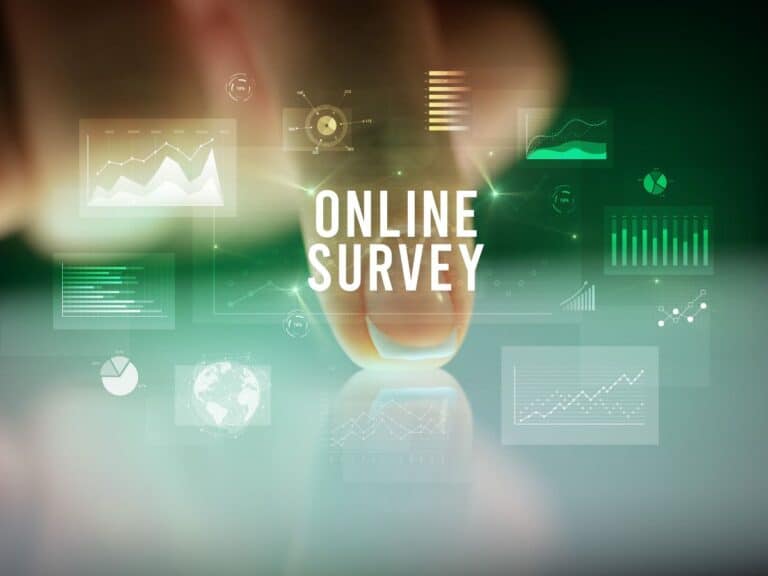Is Being a Seller on Amazon Worth It? The Pros and Cons (An Honest Review)
Amazon is consistently ranked as one of the world’s biggest and best online marketplaces, generating $513 billion in revenue in 2022 and consistently increasing it yearly. Its prominence in the e-commerce marketplace means many people build successful businesses selling their products on Amazon. But is it really worth it? What are the pros and cons of selling on Amazon?
Amazon’s vast customer base, credibility, and built-in advertising systems make it an excellent marketplace for selling products online. However, potential Amazon sellers should be aware that its commission structure, strict policy enforcement, and increased competition could make life difficult.
Most people who start selling on Amazon consider it a better option than creating an e-commerce site from scratch. There are plenty of good reasons to sell on this massive marketplace, as long as you understand (and prepare for) the potential pitfalls. Let’s look at the good and bad aspects of being a seller on Amazon.
My Experience as an Amazon Seller
Several years ago, I found myself looking for a side hustle to earn a few extra dollars with the potential of eventually providing a full-time income. I’ve long been interested in e-commerce, and since Amazon is such a large online marketplace, it seemed like a good starting point.
I made my decision after reading a few success stories online. People quit their jobs and earned decent incomes simply by selling products on Amazon. The opportunity to reach millions of customers without having to set up my own website appealed to me since I didn’t have a lot of capital to invest upfront.
I started buying products at a low price from local stores and selling them on Amazon for a slight profit. I felt this was a relatively low-risk way to test the waters and suited my initial budget quite well.
However, I quickly learned that selling on Amazon isn’t as simple as listing a product and waiting for the money to roll in. Two of the biggest hurdles I had to overcome were Amazon’s fees and steep competition. I had to consistently tweak my product listings, experiment with pricing strategies, and pay for ads to make my products stand out, eating up a lot of my profits.
Despite the challenges, I’ve had several successes that make the journey worthwhile. One of my private-label products — a kitchen gadget — eventually started gaining traction after I had done extensive research to find a niche product that wasn’t overly competitive but had a strong demand. I also learned how to effectively leverage Amazon’s advertising platform to get more sales.
Through it all, I found patience and persistence essential, but you must also do proper product research and offer exceptional customer service. You are on Amazon to cater to the needs and desires of your customers, and the more of them you cater to, the better your results will be.
Understanding Amazon Seller Central
Amazon provides its sellers with a platform called Amazon Seller Central. This single platform will allow you to manage your products and prices, fulfill orders, and maintain other business settings. It is available on the web or in mobile app form, making it very convenient. Creating your Amazon Seller Central account is the first step to selling on Amazon.
Setting Up a Seller Account
Registering as a seller on Amazon is quick and quite painless. Simply follow these steps:
- Go to the Amazon Seller website at sell.amazon.com and click the Sign-Up button.
- Provide your email address and password. You can use your current Amazon account details if you have one.
- Enter your business information: business location, type, name, registration number, registered business address, and phone number.
- Provide your seller information: your full name, country of citizenship, country and date of birth, and residential address.
- Enter your banking and credit card information. Amazon will use these to deduct fees and deposit your earnings.
- Next, you will be asked to provide your Amazon Store information, such as what you would like your store to be called, applicable business certifications, product codes, and manufacturer or brand status.
- Last, you must verify your identity by providing Amazon with a government-issued ID and proof of address. This is usually done through a video call with an Amazon representative.
Seller Account Types
During registration, you will be asked if you want to register for an individual or professional account. This is an important decision because it will affect your Amazon fees. You can change it later, but making the right choice as soon as possible is a good idea.
An Individual account is great for many new sellers who don’t anticipate many sales (ideally less than 40 per month). There’s no fixed monthly fee, but Amazon takes 99 cents of every sale.
A Professional account is the best option for larger businesses that aim to sell more than 40 products per month. Instead of 99 cents per sale, there’s a fixed monthly fee of approximately $39.99.
Navigating the Seller Dashboard
The Seller Dashboard isn’t a single dashboard. Instead, it’s a multi-faceted tool incorporating several dashboards and systems to help you manage your products and orders. Amazon offers excellent resources to help new sellers navigate the system, but a few of the important parts are:
- Account Health dashboard: This is where you can view information about your compliance with local and international regulations and Amazon’s policies.
- Sales dashboard: This dashboard lets you monitor your sales performance so you can make decisions to improve your campaigns. You can also find information about customer interactions, demographics, search terms, and purchasing patterns to help you optimize your sales.
- Listing Quality dashboard: Here, you can view information about the performance of your listings, such as customer reviews and conversion rates. You can use this data to improve your listings for better performance.
- Manage Orders dashboard: This tab gives you an overview of all your pending, shipped, and completed orders. It will tell you if urgent matters, such as refund requests, demand your attention.
- Customer Reviews tool: This is where you can interact with customers who leave you reviews. It’s a great way to see the issues that concern your customers and provide feedback.
The Advantages of Selling on Amazon (Pros)
Amazon has a wealth of tools and services available to help improve the selling experience, but there are several other benefits to selling on Amazon. Let’s examine them more closely.
Vast Customer Base
As one of the most popular and widely used e-commerce platforms, Amazon has over 310 million active users internationally. Over and above that number, Amazon received 2.72 billion unique monthly visitors in 2023 alone.
That’s the size of the market you’re tapping into when you start selling on Amazon. There’s no way your own e-commerce website will be able to give you access to that number of users without many years of intensive marketing and effort. In other words, selling your products on Amazon makes it easier to reach the masses.
Furthermore, because Amazon is active in more than 50 countries, it’s probably the easiest way to start selling your products internationally.
Fulfillment by Amazon (FBA) Benefits
Fulfillment by Amazon (FBA) is a system where sellers supply stock to Amazon, which handles all warehousing and shipping on the seller’s behalf. This comes at a price, but it’s still worthwhile because:
- Shipping costs less. Amazon’s power in the marketplace allows the company to negotiate and secure lower shipping costs with carriers. By joining the FBA program, you reap the benefits of these lower shipping fees.
- Shipping is faster. Products sold through FBA are eligible for free and, with Prime membership, faster shipping. This greatly benefits the customers, and sellers who offer this have an advantage over those who don’t.
- Amazon takes care of warehousing. It’s not free, but you won’t have to rent a warehouse or keep products in your garage.
- Amazon takes care of customer service, at least to some extent. You aren’t available 24/7, but Amazon’s agents are, so your customers can receive assistance even when you’re not in the office.
- Amazon also takes care of any returns and refunds, saving you the time and effort of doing so yourself.
Brand Credibility and Trust
Amazon’s brand is established and well-known. Not everyone likes Amazon, but even those who don’t, trust the company enough to go there whenever they need to buy something.
Selling on Amazon means buying into that brand along with the trust and loyalty that come with it. Few people will immediately trust a new and unknown e-commerce website, but Amazon’s reputation will convince most customers that you’re a reliable seller.
Access to Amazon Advertising
Amazon does a lot to help sellers promote their products. You can add plenty of information about your products to help sell them and even create specialized storefronts to make them stand out more prominently.
However, an arguably more useful way to promote your products is through Amazon advertising. You can pay Amazon for sponsored ads that will display your products high up in relevant searches to help drive traffic. Even though it’s not free, it’s a great way to build a customer base and get your first sales.
You can do the same for a personal e-commerce website using Google Ads and social media. Still, there’s a big difference: when people search for a product on Amazon, they’re likely searching with the intent to purchase, which isn’t always the case on Google and rarely on social media.
The Challenges of Selling on Amazon (Cons)
As great as it is to sell on Amazon, it’s important to be aware of the potential challenges you could face.
Increased Competition
Amazon has more than 9.7 million sellers worldwide, all actively selling on the marketplace, which leads to two major problems.
Market Saturation
Popular niches like electronics, toys, makeup, books, and pet supplies are highly saturated on Amazon. If your products fall into any of these saturated niches, you will have difficulty competing with more established sellers.
Competing with Counterfeit Products and Unauthorized Sellers
There are plenty of sellers on Amazon that sell counterfeits or products they aren’t authorized to sell. These products often look convincing enough to fool unsuspecting buyers and are priced so low that many people will buy them rather than your products.
This competition is unfair, and Amazon acts against it as much as the company legally can, but it is a real problem you must keep in mind.
Fulfillment and Storage Costs
Amazon charges fees for its FBA program and storage. These are calculated based on various criteria, such as product type, quantity, and container size. JungleScout has a useful calculator you can use to estimate your costs.
However, inventory management is another challenge. It’s important to always ensure that you have enough products to meet your customers’ needs, especially during peak seasons like Black Friday. But the more products you have in storage, the higher the costs will be. This is a balancing act that takes some time to get right.
Amazon’s Commission Structure
Amazon charges a commission, known as a referral fee, on all the sales you make. The prices vary according to the type of product, price, quantity sold, and the type of seller account you have (Individual or Professional).
For example, automotive and power sports products have a standard fee of 12% with a minimum of 30 cents. Some go as low as 8%, while others are as high as 45%.
Understanding how much you will be paying on every sale is worth the effort and, ideally, something you should do before you decide on your selling price because those fees could have a huge impact on your bottom line and eat into your profits.
Potential Account Suspension and Policy Enforcement
Amazon has very strict policies that align with local and international laws. The company is very strict and unapologetic in enforcing these policies. For example, Amazon could suspend your account if it seems like you’re an unauthorized seller or guilty of shady business practices.
This is a good thing for the most part, but mistakes do slip in from time to time. Some people had their accounts suspended because they changed their bank details, and the new accounts seemed dubious. Others, like Reddit user icantfindnickname, can suddenly find their accounts suspended simply because they seem related to other accounts.
If your account is suspended erroneously, it’s usually easy to resolve the problem by contacting an Amazon agent. But it means you lose out on potential sales while your account is offline.
Tips for Successful Selling on Amazon
Despite the cons, there’s still value in selling on Amazon, which is why so many people are still doing it. But it’s not just uploading products and waiting for your money. Let’s look at a few tips to help you sell your products effectively.
Product Research and Selection
Many people go into the selling process because they’ve found a product they reckon would be a good seller. That’s not the best way to do it. Instead, it’s a good idea to start with product research. Which products are the most profitable? Is there enough demand, and how steep is the competition? In other words, try to ensure that your product will sell.
Amazon has an updated list of bestselling products and niches to help you choose. Then, go to Amazon and search for the product you have in mind to see how much competition you’ll face and what the prices generally look like.
Optimizing Product Listings
A good product listing can set you apart from many of your competitors. Consider the following:
- Have a compelling product title. The title should be descriptive, contain several keywords, and sound enticing.
- Write persuasive bullet points and product descriptions. There are many Amazon listings where product descriptions are confusing, have bad spelling, or don’t contain enough information because the sellers did a rushed job. Take the time to share as much information as possible clearly and understandably.
- Add high-quality product photos instead of low-resolution, blurry images. People like to see the product in as much detail as possible before they buy.
Pricing Strategies and Promotions
Your price is another factor that justifies detailed consideration. You want the price to be competitive, so comparing it’s a good idea. But you also want it to be profitable, especially considering Amazon’s fees.
Furthermore, think about perceived value. Many people consider cheaper products to be of lower quality and would rather spend more on something that seems better. Try to find the sweet spot considering all these factors.
It’s also a good idea to run promotions and offer discounts. Amazon offers these at certain times, like on Black Friday, but nothing stops you from running a promotion to try and get more buyers quickly.
Managing Customer Feedback and Reviews
Many buyers spend considerable time reading through reviews and looking at product ratings before buying, so getting as many positive reviews as possible is incredibly important. Encourage your buyers to leave a review and do everything you can to ensure it will be positive.
But bad reviews aren’t necessarily negative, either. A negative review can easily be turned into a positive by responding. Many customers will check for a customer response whenever they see a negative review. A seller who responds constructively will often gain buyer trust in the process.
Frequently Asked Questions (FAQs)
What are the initial costs of becoming an Amazon seller?
It is possible to start selling on Amazon without any upfront costs if you register as an Individual seller and don’t opt for FBA. This means you will only pay referral fees for every sale you make. Professional sellers will pay around $40 monthly, and FBA comes with considerable warehousing fees. In other words, you can start selling with no initial costs, but your sales, product types, and seller account will determine how much you must pay.
Is it necessary to use FBA, or can I handle fulfillment myself?
Amazon offers an FBM (Fulfilled by Merchant) option. It’s cheaper than FBA, but you miss out on benefits such as storage, lower shipment costs, and Prime shipping options.
What steps should I take if my account gets suspended?
The first step is to determine why the account was suspended. Amazon usually explains this in the suspension email. Then, create a plan of action, correct the problem, and submit an appeal by following the instructions on Amazon’s website.
Can I sell in multiple categories, and are there any restrictions?
You are allowed to sell products in any number of categories. The only restriction is that each product may only be included in one category.
Is it better to sell as an individual or a registered business?
This depends on your situation. Casual sellers don’t usually need more than an Individual account. Professional accounts cater to more serious sellers like registered businesses, which means you can sell more and access other benefits, like FBA.
How do I handle sales tax on Amazon?
Tax laws are complex and depend on location, so it’s always best to consult a tax specialist or accountant. However, as a marketplace facilitator, Amazon is legally expected to calculate, collect, and remit sales tax on your behalf.
What are some effective ways to boost product visibility and sales?
Start by choosing a high-demand product with low competition, if possible, and set a competitive price. Improve your product listing as much as possible by focusing on your title, description, images, and videos. You can also pay for Amazon Ads to help improve your products’ visibility and increase sales.
Conclusion
Amazon’s massive customer base, the brand’s credibility, and access to features like Amazon Advertising and FBA make selling on Amazon a no-brainer for many, especially compared to starting their own e-commerce website. However, Amazon also comes with high competition, costs, and the possibility of account suspension.
Selling on Amazon is worth it for many people, but that doesn’t necessarily mean it’s worth it for you. Knowing the pros and cons and comparing them with your goals and available resources is important. If you want to be a serious Amazon seller, with a good product and the financial backing, you should have no problem building a thriving business.
PIN THIS FOR LATER…

DID YOU FIND THIS INFORMATION HELPFUL? Share the love on social.
Follow us on Pinterest & Instagram!
ANY OTHER BUSINESS ADVICE WE CAN WRITE ABOUT?
Let us know, email us at: Advice@TheBestBusinessAdvice.com









https://continent-telecom.com/virtual-number-china
https://virtual-local-numbers.com/countries/1245-uae-toll-free-numbers.html
https://avenue17.ru/oborudovanie/kompressor
I consider, that you are not right. I can defend the position. Write to me in PM.
Преимущества дизайнерской мебели премиум-класса.
Дизайнерская мебель премиум-класса [url=https://byfurniture.by]https://byfurniture.by[/url] .
Boost Your Amazon Sales With This Free Guide, Follow The Link.
This resonates deeply with my artistic journey! By the way, Sprunky has been my go-to platform for experimental music creation.
Love how this post emphasizes data-driven selling! For those buried in guesswork, Helium 10’s tools demystify trends and competition. A friend swears by their profit-tracking features—game-changer for margins. There’s a comprehensive resource diving into its pros and cons that’s worth bookmarking. Always refreshing to see actionable advice for Amazon success!
Dear Sir/ma,
We are a financial services and advisory company mandated by our investors to seek business opportunities and projects for possible funding and debt capital financing.
Please note that our investors are from the Gulf region. They intend to invest in viable business ventures or projects that you are currently executing or intend to embark upon as a means of expanding your (their) global portfolio.
We are eager to have more discussions on this subject in any way you believe suitable.
Please contact me on my direct email: ahmed.abdulla@dejlaconsulting.com
Looking forward to working with you.
Yours faithfully,
Ahmed Abdulla
financial advisor
Dejla Consulting LLC
[url=https://7k-download-apk.ru/skachat-7k/]7k-download-apk.ru[/url]
Всем привет!
Нашёл для вас кое-что интересное, особенно для тех, кто фанатеет от казино 7k. По ссылке можно узнать все подробности о том, как скачать это казино.
В статье, скорее всего, расскажут о способах скачивания для разных устройств, особенностях установки и, возможно, о бонусах, которые можно получить после установки.
7k-download-apk.ru
https://500px.com/p/palmacares?view=resume
https://www.euribor.com.es/2025/02/26/alerta-por-la-estafa-del-prestamo-equivocado-asi-operan-los-ciberdelincuentes/#comment-1544790
https://ufo.hosting/
https://the.hosting/bg/vps-vds-australia-kanberra
https://the.hosting/ru/help/chernyj-jekran-vmesto-rabochego-stola-v-rdp-sessii
buy uk virtual number
boot mieten ohne fГјhrerschein https://eurosegeln.com
yacht mieten https://eurosegeln.com
https://www.copytechnet.com/member/363823-findycarcom/about
https://www.dibiz.com/findycares
That is a great tip especially to those new to the blogosphere.
Brief but very precise info… Many thanks for sharing this one.
A must read article!
Slots are so much fun, but finding a legit platform is key! I was checking out 77jl casino and their easy registration & app download look promising. Seems like a great place to start if you’re new to online gaming! 👍
obviously like your web site however you need to check the spelling on quite a few of your posts.
A number of them are rife with spelling issues and I in finding it very
troublesome to inform the truth nevertheless I’ll definitely come back again.
You have hit the mark. In it something is also idea good, agree with you.
Venture into the vast realm of EVE Online. Test your limits today. Explore alongside millions of explorers worldwide. [url=https://www.eveonline.com/signup?invc=46758c20-63e3-4816-aa0e-f91cff26ade4]Join now[/url]
awesome
**mind vault**
mind vault is a premium cognitive support formula created for adults 45+. It’s thoughtfully designed to help maintain clear thinking
Hello guys!
I came across a 143 helpful tool that I think you should check out.
This platform is packed with a lot of useful information that you might find insightful.
It has everything you could possibly need, so be sure to give it a visit!
[url=https://howtechhack.com/top-8-scheduler-apps-on-android-and-ios/]https://howtechhack.com/top-8-scheduler-apps-on-android-and-ios/[/url]
And do not neglect, everyone, — one always are able to within this publication locate solutions for your most confusing questions. Our team attempted to lay out all of the information via the extremely easy-to-grasp manner.